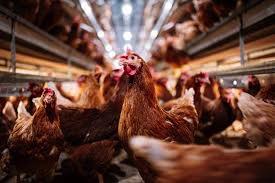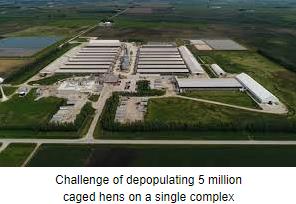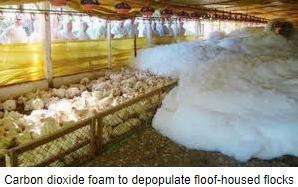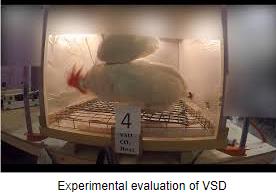 The Animal Welfare Institute has petitioned the USDA Animal and Plant Health Inspection Service to “to exercise its authority to require emergency action plans to depopulate laying flocks” some of which are housed in complexes with more than three million hens.
The Animal Welfare Institute has petitioned the USDA Animal and Plant Health Inspection Service to “to exercise its authority to require emergency action plans to depopulate laying flocks” some of which are housed in complexes with more than three million hens.
Based on experience gained during the 2015 HPAI epornitic in the U. S., APHIS set a target of 48 hours to depopulate a complex to limit lateral spread of the infection. Accordingly, the previous program of using “kill carts” flushed with carbon dioxide was frequently abandoned during the 2022 outbreak. Ventilation shutdown with or without heat or carbon dioxide was applied to expedite depopulation. According to the Animal Welfare Institute, 37 outbreaks on large complexes required at least three days extending upwards to more than a week.
The petition submitted by the Animal Welfare Institute demands more humane methods of mass depopulation. Unfortunately, they fail to suggest alternatives or how this can be achieved. Since 2015, depopulation of floor-housed flocks of broilers, laying hens and turkeys has been accomplished using carbon dioxide foam that is rapid and humane although requiring special equipment manufactured and deployed in anticipation of an outbreak. The problem of depopulating large flocks in cage housing and aviaries remains unsolved, hence, the adoption of ventilation shutdown.
Apart from the Animal Welfare Institute, organizations opposed to intensive livestock production have used avian influenza and mass depopulation as an issue and it is inevitable that public sentiment against contrived suffocation will increase. It is noted that a welfare bill introduced by Senator Cory Booker (D-NJ) both VSD and foam depopulation would be banned.
 Opposition to VSD that appears to be the only current practical method of depopulating large cage and aviary complexes since whole-house hypercapnic killing is ineffective. This is due to an inability to adequately seal most houses coupled with the cost involved in attaining an adequate concentration of carbon dioxide in a building with a capacity approaching 300,000 cubic feet.
Opposition to VSD that appears to be the only current practical method of depopulating large cage and aviary complexes since whole-house hypercapnic killing is ineffective. This is due to an inability to adequately seal most houses coupled with the cost involved in attaining an adequate concentration of carbon dioxide in a building with a capacity approaching 300,000 cubic feet.
 Mass depopulation might not be required if veterinary regulators were to reevaluate their King Canute approach to stamping out a virulent infection introduced seasonally by migratory birds and possibly transmitted by the aerogenous route. Events in the U. S. during 2022 and ongoing in the E.U. suggests that alternative approaches to prevention including mass immunization may be more efficient, reducing the need for VSD and the direct and indirect costs of mass depopulation.
Mass depopulation might not be required if veterinary regulators were to reevaluate their King Canute approach to stamping out a virulent infection introduced seasonally by migratory birds and possibly transmitted by the aerogenous route. Events in the U. S. during 2022 and ongoing in the E.U. suggests that alternative approaches to prevention including mass immunization may be more efficient, reducing the need for VSD and the direct and indirect costs of mass depopulation.
Events in 2022 and possibly what is yet to come in the fall, demonstrate the fallacy of attempting to eradicate what may be considered as a seasonally and regionally endemic disease. Avian influenza may be regarded as the “Newcastle disease” of the 2020s”. This catastrophic disease was effectively controlled by vaccination, not by ‘stamping out’. The World’s poultry industries coexist with Newcastle disease through effective vaccination complemented by biosecurity.